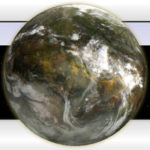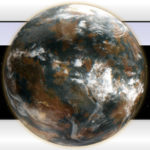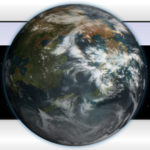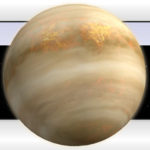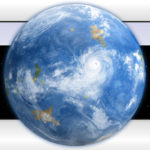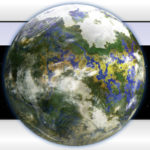These are the planets most like the Earth.
–
Terrestrial Group
- E, F, G (10-15k km),
- H (8-15k km) desert, L (10-15) barren,
- M,
- N (10-15) Venus/reducing gases,
- O (10-15) 80%water, P (10-15) >80% water,frozen.
- Q (4-15) (could be some of the dwarf terrestrials) variable star or eccentric orbit, XYZ
rocky,
mass 0.02 – 5.0 Earth; massive enough to clear out their orbital zones and/or sustain continuous geological activity. This activity also maintains a substantial atmosphere.
mass 0.02 – 5.0 Earth; massive enough to clear out their orbital zones and/or sustain continuous geological activity. This activity also maintains a substantial atmosphere.
–
Proto-Active
Proto-planetary, still forming (Class E?/G?), surfaces often partial to completely molten, atmospheres typically thick with hydrogen and helium, as well as gases released by the massive geological activity; they still suffer major impact events. In general, ages < between 10 – 100 MYO. Prior to this, the Terrestrial bodies are still accreting mass at a very high rate, and after this point the surface, though still occasionally experiencing major impacts, has largely cooled, forming the earliest crust.
Proto-Lithic: Class F
surfaces extremely hot or even molten.
composed primarily of silicates, common in most systems.
retain atmospheres of varying densities,
rich in hydrogen and helium.
surfaces extremely hot or even molten.
composed primarily of silicates, common in most systems.
retain atmospheres of varying densities,
rich in hydrogen and helium.
Proto-Carbonian:
surfaces extremely hot or even molten.
carbon-rich,
fairly common, though they tend to appear more in high-massed systems.
atmospheres are typically rich with hydrogen, helium, and primordial methane.
surfaces extremely hot or even molten.
carbon-rich,
fairly common, though they tend to appear more in high-massed systems.
atmospheres are typically rich with hydrogen, helium, and primordial methane.
Proto-Gelidic:
surfaces hot,
high instances of geological activity.
Orbit outer regions of a solar system, and so the primary building material is water.
may possess significant atmospheres and even regions of liquid water on their surfaces as well, although as the world ages and cools, the atmosphere and liquid will freeze out, while the heavier silicates and metals will have since sunk to form the body’s core.
surfaces hot,
high instances of geological activity.
Orbit outer regions of a solar system, and so the primary building material is water.
may possess significant atmospheres and even regions of liquid water on their surfaces as well, although as the world ages and cools, the atmosphere and liquid will freeze out, while the heavier silicates and metals will have since sunk to form the body’s core.
–
Epi-stellar
tidally locked to stellar primary,
surface conditions made dynamic by geological activity, and/or atmospheric dynamics.
Jani-Lithic:
rocky,
dry,
geologically active, greatly varying degrees of geological activity.
atmospheres quite varied, but typically are primarily composed of carbon dioxide.
rocky,
dry,
geologically active, greatly varying degrees of geological activity.
atmospheres quite varied, but typically are primarily composed of carbon dioxide.
Vesperian: (Class M, K, L) F
silicate worlds ,
continuous geological activity which may be plate tectonics, or a similar mechanism.
Orbit Close proximity to cooler late k-type or M-type stars,
temperatures suitable for the development of life. And while a large number of circumstances must be met for these worlds to be life bearing, circumstances which are rare, the sheer number of stars which can host these worlds makes the presence of Vesperian planets only slightly less common than Gaian worlds.
silicate worlds ,
continuous geological activity which may be plate tectonics, or a similar mechanism.
Orbit Close proximity to cooler late k-type or M-type stars,
temperatures suitable for the development of life. And while a large number of circumstances must be met for these worlds to be life bearing, circumstances which are rare, the sheer number of stars which can host these worlds makes the presence of Vesperian planets only slightly less common than Gaian worlds.
- Jani-Vesperian: (possible L-class) atypical, borderline Vesperian worlds, either most of the surface water frozen out on the night-side, or the volatiles having been depleted during the planetary formation process. Native biology is sustained by the thickened atmospheres, but due to the lack of large bodies of water they suffer major climatic extremes. Most surface water located in the twilight regions, as well as the biomass.
- Eu-Vesperian: mature Vesperian worlds, typically support lush biomes. Depending on continental configuration, and amount of surface water, there may be a night-side ice cap of varying size and thickness — the oceans and, to a somewhat lesser extent, the atmosphere aid in evenly distributing the heat of the star across the globe, leaving only extreme temperatures under the star and near the night-side polar cap.
- Bathy-Vesperian: high temperature, deep oceanic basins, atmospheres quite dense. tend to have complete cloud cover, and a lack of any sort of night-side ice cap. atmosphere and ocean tends to evenly distribute global temperatures, although there may be an oceanic “dead zone” near the surface directly underneath the star. Temperatures in this region can easily reach nearly 250 degrees Fahrenheit.
- Chlori-Vesperian: (possible L-class) biospheres that release free chlorine through photosynthesis. can only form when there is a high percentage of hydrogen chloride in addition to the water. believed to be exceptionally rare, especially when taken with the relative rarity of Vesperian worlds themselves.
–
Telluric
conditions do not support a continuous hydrological cycle of any sort. typically subject to major resurfacing by literally cataclysmic events over the course of 700+ million years, although some may continue such resurfacing at a slow but constant pace.
Because of the constant geological out-gassing, the atmospheres are typically quite dense, and produce major greenhouse effects.
Phosphorian:
most extreme of Telluric.
Orbit form much closer to their star than other Tellurics,
have correspondingly higher temperatures.
Because of the extreme solar heat, little to no cloud cover, although the atmospheres remain quite dense.
most extreme of Telluric.
Orbit form much closer to their star than other Tellurics,
have correspondingly higher temperatures.
Because of the extreme solar heat, little to no cloud cover, although the atmospheres remain quite dense.
Cytherean: (N: Venus)
archetypal Telluric,
trademark thick atmospheres formed by unrelenting geological activity and the buildup of major greenhouse gases over 200+ million years.
While may form with an appreciable amount of water, the formation of this hot-house environment will eventually cause it all to evaporate and breakdown into its component atoms.
Tectonic activity, which may have been in the formative stages, ceases, but the associated geology continues unabated. Eventually the build-up of gases produces incredibly dense atmosphere, while the volcanism thickens the crust, until a point is reached when volcanism may actually become rare. However, a buildup of subsurface pressure is inevitable, and every ~300 million years the surface literally melts as the molten mantle boils up. Once this pressure has been globally released, the process of thickening the crust begins once more.
archetypal Telluric,
trademark thick atmospheres formed by unrelenting geological activity and the buildup of major greenhouse gases over 200+ million years.
While may form with an appreciable amount of water, the formation of this hot-house environment will eventually cause it all to evaporate and breakdown into its component atoms.
Tectonic activity, which may have been in the formative stages, ceases, but the associated geology continues unabated. Eventually the build-up of gases produces incredibly dense atmosphere, while the volcanism thickens the crust, until a point is reached when volcanism may actually become rare. However, a buildup of subsurface pressure is inevitable, and every ~300 million years the surface literally melts as the molten mantle boils up. Once this pressure has been globally released, the process of thickening the crust begins once more.
–
Arid
Class L
conditions support a limited but continuous hydrological cycle, and quite often an accompanying biosphere.
The geological activity of these worlds, coupled with the constant recycling of carbon by that activity, aids in both keeping the planet from freezing, or from evolving into a Cytherean world. it is often the evolved biology of the planet which aids in maintaining its habitability.
conditions support a limited but continuous hydrological cycle, and quite often an accompanying biosphere.
The geological activity of these worlds, coupled with the constant recycling of carbon by that activity, aids in both keeping the planet from freezing, or from evolving into a Cytherean world. it is often the evolved biology of the planet which aids in maintaining its habitability.
Darwinian:
Arid ,
< 30% surface water coverage, Most water is locked up within its biomass, which aids in maintaining global habitability.
lacking any kind of plate tectonics.
Arid ,
< 30% surface water coverage, Most water is locked up within its biomass, which aids in maintaining global habitability.
lacking any kind of plate tectonics.
Saganian:
ammonia equivalents of Darwinian worlds, the planet’s water being mixed with liquid ammonia, the biomass fully adapted and dependent on its presence.
ammonia equivalents of Darwinian worlds, the planet’s water being mixed with liquid ammonia, the biomass fully adapted and dependent on its presence.
Asimovian:
methane equivalents of Darwinian worlds, water mixed with liquid methane, the biomass fully adapted and dependent on its presence.
Orbit: dimmer M-type dwarf stars.
methane equivalents of Darwinian worlds, water mixed with liquid methane, the biomass fully adapted and dependent on its presence.
Orbit: dimmer M-type dwarf stars.
–
Tectonic
Terrestrial, crust is separated into thinner and heavier oceanic crust, and thicker and lighter raised continental crust.
conditions support a continuous hydrological cycle,
quite often an accompanying biosphere.
Gaian: (Class is ???) F
silicate-rich, ,
non-tidally locked,
continuous geological cycle , often quite geologically active.
Orbit tend to be located around stars ranging from F8 V to K3 V, often in systems with one or more large outer system Jovians.
usually 1/+ large moons, which aid in stabilizing the planet’s axial tilt, and thus supports a stable biosphere.
silicate-rich, ,
non-tidally locked,
continuous geological cycle , often quite geologically active.
Orbit tend to be located around stars ranging from F8 V to K3 V, often in systems with one or more large outer system Jovians.
usually 1/+ large moons, which aid in stabilizing the planet’s axial tilt, and thus supports a stable biosphere.
- Eo-Gaian: young Gaian, age roughly between 800 MYO and 3 BYO, rich and thick carbon dioxide and methane atmospheres. The presence of such a thick atmosphere, generated largely by methanogen bacteria, creates a major greenhouse effect and a fairly active water cycle. atmospheric methane forms thick layers of hydrocarbons in the upper atmosphere, covering the planet (appear) in an orange haze.
- Meso-Gaian: Age roughly 3 – 4 BYO. Life prominent microbiological ecosystems. Atmospheres largely cleared of methane, although carbon-dioxide remains prevalent. As the present microbiological forms of life become more complex and evolve, however, they begin to release oxygen into the atmosphere, slowly transforming the planet into a Eu-Gaian state.
- Eu-Gaian: Class M, mature Gaian, fully developed geological, hydrological, and biological systems. Life usually quite diverse, although there may be cases where evolution beyond simple microbial forms never occurred, simply because there was no environmental pressure to do so. even in these cases, the life present produces oxygen and carbon dioxide as a bi-product, making the atmosphere unique and generally friendly for non-native lifeforms. In short, these are the archetypical “blue marbles” that are so covetously sought after by Humankind.
Gaian-Xeric: (Class L) warm and dry, 15/-% surface covered by standing water. Major desert zones common, life tends to remain close to the small ocean and sea basins. Plate tectonics present, but the relative scarcity of water means that this geological process moves slowly. Less water also means that less carbon dioxide is absorbed and locked away into carbonate rock; as such, the atmospheres are carbon dioxide rich and contribute to the overall higher temperatures of these worlds.
Gaian-Campian: Surface 30-50% water coverage, oceans and seas tending to be quite saline. Temp Climatic extremes common, vast inland deserts not uncommon. Due to the low water table, biomass and atmospheric oxygen is much lower in levels than with other Gaian worlds. effective absence of an efficient oceanic heat transfer system = large temperature differences between the latitudes.
Gaian-Paludial: Surface 30-50% water coverage, land features tend to have low surface relief, forming extensive swamp-lands, lakes, lushly forested regions, and semi-open woodland. Climate predominantly oceanic, with relatively open ocean flow and freedom for globe-spanning weather systems to keep a largely homogenous planetary temperature. Polar regions do tend towards glaciation, however. Geographical arrangement is typically due to a decrease in geological activity, and tends to be common for lower mass, older Gaian worlds.
Gaian-Continental: Surface 50-80% water coverage, most of the planet’s water concentrated within deep ocean basins. Arrangement of continental plates can create a wide variety of climatic conditions across the globe, and these conditions change constantly as the plates continue to slowly drift over 2+ billion years
Gaian-Pelagic: (Class O and P, class M) Surface>80% water coverage, continental plates largely submerged. Global climate is even and tends towards the temperate, although various circumstances can swing that climate to either the cold or the hot end of the spectrum. majority of the terrestrial regions are islands or micro-continents located along rift or convergent zones.
Gaian-Campian: Surface 30-50% water coverage, oceans and seas tending to be quite saline. Temp Climatic extremes common, vast inland deserts not uncommon. Due to the low water table, biomass and atmospheric oxygen is much lower in levels than with other Gaian worlds. effective absence of an efficient oceanic heat transfer system = large temperature differences between the latitudes.
Gaian-Paludial: Surface 30-50% water coverage, land features tend to have low surface relief, forming extensive swamp-lands, lakes, lushly forested regions, and semi-open woodland. Climate predominantly oceanic, with relatively open ocean flow and freedom for globe-spanning weather systems to keep a largely homogenous planetary temperature. Polar regions do tend towards glaciation, however. Geographical arrangement is typically due to a decrease in geological activity, and tends to be common for lower mass, older Gaian worlds.
Gaian-Continental: Surface 50-80% water coverage, most of the planet’s water concentrated within deep ocean basins. Arrangement of continental plates can create a wide variety of climatic conditions across the globe, and these conditions change constantly as the plates continue to slowly drift over 2+ billion years
Gaian-Pelagic: (Class O and P, class M) Surface>80% water coverage, continental plates largely submerged. Global climate is even and tends towards the temperate, although various circumstances can swing that climate to either the cold or the hot end of the spectrum. majority of the terrestrial regions are islands or micro-continents located along rift or convergent zones.
- Bathy-Gaian: (Class O) could be regarded as cooler and relatively drier versions of Bathy-Pelagic, or very hot and high surface pressured Eu-Gaian. Appear Superficially: similar to true Cytherean, their massive atmospheres consisting of carbon dioxide, and their surfaces concealed beneath dense cloud layers. surfaces are under 10-100 bars of pressure and 200-400 degrees Fahrenheit, although the high pressure keeps that water from evaporating. surface is covered by a global ocean ~7 km deep. Life nearly always present, with more complex forms found in the deeper waters. ocean bottom is barren and largely anoxic, but possesses its own particular set of biomes. Plate tectonics present, but continental crust almost entirely missing.
- Chloritic-Gaian: Class H (desert)? Quite rare, orbit usually around warmer G and cooler F-type stars. Typically little / no complex surface life, with most forms remaining in marine environments. Marked by large quantities of integrated chlorine in the environment, which is integral to any biomes present. Appearance: oceans and clouds somewhat greenish, while continents usually somewhat barren brown.
- Amu-Gaian: 15-85% ammonia ocean coverage. Atmospheres methane-rich. Cold climates despite the presence of a greenhouse gas, with the ammonia content in the water aiding in keeping them liquid. Typically orbit cooler K and M-type stars. Life can be present, but employs processes to balance the mixed ammonia-water chemistry of their environments.
- Thio-Gaian: based on sulfur photosynthesis rather than oxygen photosynthesis. The protein S8, which is produced in photosynthesis, is carried to the upper atmosphere and shields the surface from radiation, while the sulfuric acid which is also produced by this process is used to produce sulfur dioxide by plankton-like fauna-forms or microbes, which is then produced by other life forms, which in turn produce carbon dioxide and hydrogen sulfide as a waste product. These are then used by the flora-forms to continue the cycle. Appearance: usually yellowish skies, and soil may be stained red from extensive rust deposits.
- Gaian-Gelidian: settled into a frozen climatic equilibrium, either due to biological or orbital placement reasons. Complex life, if it develops, or remains extant, tends to be concentrated within sub-glacial seas. However, if such a world has entered into this state after the evolution of complex life, then that life will have most likely gone extinct. Atmospheres: oxygen-deprived and nitrogen-rich. Air usually devoid of major cloud formations, and with Aeolian forces being dominant, the land areas will likely be barren of ice as past glaciers will no longer have the means to grow, and their surface areas will be desiccated by the wind.
- Post-Gelidian: (later examples: Class L) begun to lose large amounts of surface water, typically due to the beginning of their star’s evolution off of the main sequence. Early stages: dense, cloud-covered, water-rich atmospheres. Often, plant life will undergo an explosion of diversity and growth. Later examples of these worlds : largely desert, very restricted ,highly saline seas located in the lowest elevations. Life, if it remains, will be microbial extremophiles.
Amunian:
carbon-rich, thus deprived of water, silicates, and other oxygen-bearing compounds.
rich carbides, hydrocarbons, and other carbon compounds. soils are also rich in nitrogen.
Life forms not in water, then, which is rock-hard at the temperatures involved, but in liquid ammonia.
orbit M and K-dwarf stars, as the ultraviolet flux of anything greater would break down the planetary supply of ammonia. The term Amunian is derived from the Egyptian god Amun, from which the word ‘ammonia’ comes from.
carbon-rich, thus deprived of water, silicates, and other oxygen-bearing compounds.
rich carbides, hydrocarbons, and other carbon compounds. soils are also rich in nitrogen.
Life forms not in water, then, which is rock-hard at the temperatures involved, but in liquid ammonia.
orbit M and K-dwarf stars, as the ultraviolet flux of anything greater would break down the planetary supply of ammonia. The term Amunian is derived from the Egyptian god Amun, from which the word ‘ammonia’ comes from.
- Eo-Amunian: Age: young, atmosphere of gaseous ammonia, methane, small amounts of water droplets. As the planet ages and cools, these components will be broken down into nitrogen, carbon monoxide, and a hydrocarbon ‘tar’ that will rain down on the surface. Ammonia oceans will condense on the surface during this period, and the earliest forms of life will develop. These organisms will be acidophilic due to the presence of dissolved water, but they will begin converting the present oxygen into sulfur dioxide as a part of their metabolic processes.
- Meso-Amunian: have cooled, atmospheres composed almost entirely of nitrogen and carbon monoxide. Primitive life will begin to use a hydrogen-methane cycle, thus increasing the amount of methane within the atmosphere. Cycles which incorporate nitrogen and carbon monoxide will also be used and eventually incorporated into the growing planetary ecology. Temperature: as levels of methane increase the planet will once again begin to warm.
- Eu-Amunian: often considered to be ammonia analogues of Gaian. Plate tectonics, dynamic climate, differences in climate, hydrology, meteorology, and geology, all of which are significant. Sometimes an advanced biosphere. Colder than Gaian. Orbit: forming beyond the habitable zone, (cold or hot?). Receive enough energy to melt ammonia. Because ammonia ice is denser than liquid ammonia, polar caps are located beneath the polar oceans. Appearance : greener than Gaian, because of the gases involved, and their atmospheres usu. dense and rich in nitrogen, with significant amounts of methane and hydrogen.
- Bathy-Amunian: much stronger greenhouse effects than Eu-Amunian. Atmospheres very dense , retain large amounts of carbon monoxide and ‘humid’ with ammonia. capable of supporting liquid ammonia at higher temperatures because of the greater atmospheric pressure. may contain significant amounts of volcanic and possibly sulfuric gases, depending on the inherent geological activity. Large portions of the extant biomass located in the upper atmosphere, where it is cooler, as well as within the oceans and seas. Such organisms are extremophiles by the standards of the rest of the planet. The extreme worlds, highest in pressure, can actually support liquid ammonia at temperatures which are more common on Eu-Gaian.
Tartarian: Class L
rich methane , carbon compounds.
Life forms not in water, which is rock hard at the temperatures involved, but in liquid methane.
Orbit: around dimmer stars, or in the outer regions of Solar-type stars.
rich methane , carbon compounds.
Life forms not in water, which is rock hard at the temperatures involved, but in liquid methane.
Orbit: around dimmer stars, or in the outer regions of Solar-type stars.
- Eu-Tartarian: often considered to be methane analogues of Gaian worlds. Plate tectonics, dynamic climate, differences in climate, hydrology, meteorology, and geology, all of which are significant. Sometimes an advanced biosphere. Colder than Gaian. Orbit: forming beyond the habitable zone, (cold or hot?). Receive enough energy to melt methane, atmospheres usually dense and rich in nitrogen, with significant amounts of methane and hydrogen.
–
Oceanic
Class F, O
conditions support a continuous hydrological cycle , global ocean that is 20+ km deep, many support advanced biospheres.
geologically active. geological processes involved tend to be more related to Telluric or Arid than Tectonic.
conditions support a continuous hydrological cycle , global ocean that is 20+ km deep, many support advanced biospheres.
geologically active. geological processes involved tend to be more related to Telluric or Arid than Tectonic.
Pelagic: F
silicate worlds covered with a global ocean.
typically found around warm K to cool F-type stars.
silicate worlds covered with a global ocean.
typically found around warm K to cool F-type stars.
- Eu-Pelagic: 200+ times the water found on Eu-Gaian worlds. Atmospheres oxygen rich due to several ocean-related factors. Some worlds have an oxygen content > 90%.
- Bathy-Pelagic: highest water amounts, global oceans 20-200+ km deep, atmospheres extremely dense. intense atmospheric pressure keeps the ocean liquid, and keeps it from boiling away. surface evaporation and re-condensation is so high that the demarcation line between ocean and atmosphere is difficult to determine. Surface temperature can reach 200+ degrees Fahrenheit,
- Pelagic-Gelidian: (Class P) crusts: frozen over due to a variety of reasons, most often a dimming star. Tidal or subsurface geological stresses often create cracks in the global ice coverage, allowing a thin atmosphere oxygen , nitrogen to form. Were it not for constant replenishment from these rifts, the atmosphere would desiccate within 3 million years.
Nunnic: global ocean of liquid ammonia.
Teathic: global ocean of liquid methane.
–
Superclass E-G
Class E:
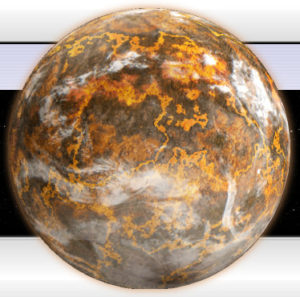
Terms: _
Age: _
Orbit: _
Diameter: _
Mass: _
Solar System Zone: _
Surface: _
Composition: _
Temperature: _
Day / Night: _
Light-side / Dark-side: _
Gravity: _
Tectonics: _
Atmosphere: _
Composition: _
Density: _
Pressure: (atm) _
Core: _
Hollow: _
Composition: _
Abundant / rich in: _
Evolution: _
Life: _
Appearance:
From Space: _
Examples: _
–
Class F:
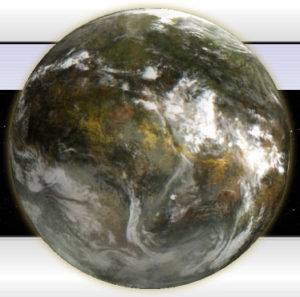
Terms: _
Age: _
Orbit: _
Diameter: _
Mass: _
Solar System Zone: _
Surface: _
Composition: _
Temperature: _
Day / Night: _
Light-side / Dark-side: _
Gravity: _
Tectonics: _
Atmosphere: _
Composition: _
Density: _
Pressure: (atm) _
Core: _
Hollow: _
Composition: _
Abundant / rich in: _
Evolution: _
Life: _
Appearance:
From Space: _
Examples: _
–
Class G:
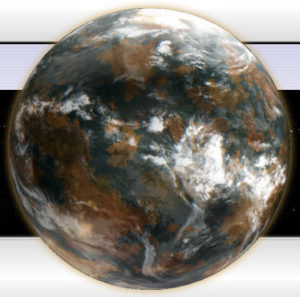
Terms: _
Age: _
Orbit: _
Diameter: _
Mass: _
Solar System Zone: _
Surface: _
Composition: _
Temperature: _
Day / Night: _
Light-side / Dark-side: _
Gravity: _
Tectonics: _
Atmosphere: _
Composition: _
Density: _
Pressure: (atm) _
Core: _
Hollow: _
Composition: _
Abundant / rich in: _
Evolution: _
Life: _
Appearance:
From Space: _
Examples: _
–
Class H:
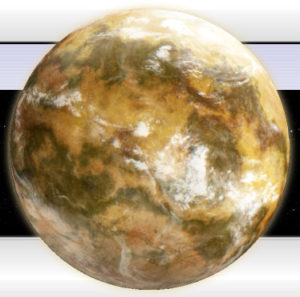
Terms: _
Age: _
Orbit: _
Diameter: _
Mass: _
Solar System Zone: _
Surface: _
Composition: _
Temperature: _
Day / Night: _
Light-side / Dark-side: _
Gravity: _
Tectonics: _
Atmosphere: _
Composition: _
Density: _
Pressure: (atm) _
Core: _
Hollow: _
Composition: _
Abundant / rich in: _
Evolution: _
Life: _
Appearance:
From Space: _
Examples: _
–
Class L:
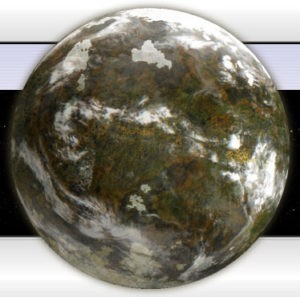
Terms: _
Age: _
Orbit: _
Diameter: _
Mass: _
Solar System Zone: _
Surface: _
Composition: _
Temperature: _
Day / Night: _
Light-side / Dark-side: _
Gravity: _
Tectonics: _
Atmosphere: _
Composition: _
Density: _
Pressure: (atm) _
Core: _
Hollow: _
Composition: _
Abundant / rich in: _
Evolution: _
Life: _
Appearance:
From Space: _
Examples: _
–
Class M:

Terms: _
Age: _
Orbit: _
Diameter: _
Mass: _
Solar System Zone: _
Surface: _
Composition: _
Temperature: _
Day / Night: _
Light-side / Dark-side: _
Gravity: _
Tectonics: _
Atmosphere: _
Composition: _
Density: _
Pressure: (atm) _
Core: _
Hollow: _
Composition: _
Abundant / rich in: _
Evolution: _
Life: _
Appearance:
From Space: _
Examples: _
–
Class N:

Terms: _
Age: _
Orbit: _
Diameter: _
Mass: _
Solar System Zone: _
Surface: _
Composition: _
Temperature: _
Day / Night: _
Light-side / Dark-side: _
Gravity: _
Tectonics: _
Atmosphere: _
Composition: _
Density: _
Pressure: (atm) _
Core: _
Hollow: _
Composition: _
Abundant / rich in: _
Evolution: _
Life: _
Appearance:
From Space: _
Examples: _
–
Class O:

Terms: _
Age: _
Orbit: _
Diameter: _
Mass: _
Solar System Zone: _
Surface: _
Composition: _
Temperature: _
Day / Night: _
Light-side / Dark-side: _
Gravity: _
Tectonics: _
Atmosphere: _
Composition: _
Density: _
Pressure: (atm) _
Core: _
Hollow: _
Composition: _
Abundant / rich in: _
Evolution: _
Life: _
Appearance:
From Space: _
Examples: _
–
Class P:
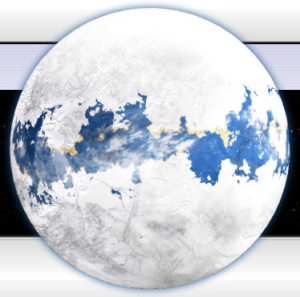
Terms: _
Age: _
Orbit: _
Diameter: _
Mass: _
Solar System Zone: _
Surface: _
Composition: _
Temperature: _
Day / Night: _
Light-side / Dark-side: _
Gravity: _
Tectonics: _
Atmosphere: _
Composition: _
Density: _
Pressure: (atm) _
Core: _
Hollow: _
Composition: _
Abundant / rich in: _
Evolution: _
Life: _
Appearance:
From Space: _
Examples: _
–
Class Q:
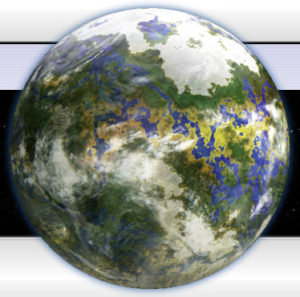
Terms: _
Age: _
Orbit: _
Diameter: _
Mass: _
Solar System Zone: _
Surface: _
Composition: _
Temperature: _
Day / Night: _
Light-side / Dark-side: _
Gravity: _
Tectonics: _
Atmosphere: _
Composition: _
Density: _
Pressure: (atm) _
Core: _
Hollow: _
Composition: _
Abundant / rich in: _
Evolution: _
Life: _
Appearance:
From Space: _
Examples: _
–

